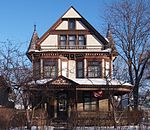Killing of Jamar Clark

On November 15, 2015, two police officers fatally shot Jamar Clark, a 24-year-old African-American man, in Minneapolis. The two shooters were Mark Ringgenberg and Dustin Schwarze. They were a part of the Minneapolis Police Department which subsequently placed the men on paid administrative leave. The night after Ringgenberg and Schwarze shot him, Clark died at the Hennepin County Medical Center after being taken off life support. His death resulted from one of the gunshot wounds the shooters inflicted on November 15.In response to the shooting, Black Lives Matter organized protests outside the Fourth Precinct police station that lasted for 18 days, as well as other protests and demonstrations in and around Minneapolis. Hennepin County Attorney Mike Freeman announced that cases concerning officer-involved shootings would no longer be put before grand juries, but instead his office would make the decision to file criminal charges. On March 30, 2016, Freeman announced that no charges would be filed against Ringgenberg and Schwarze. Freeman concluded that the officers acted in accordance with Minnesota Statutes authorizing deadly force and that the state would be unable to provide evidence that the officer's use of force was unlawful. In 2019, Clark's family agreed to a $200,000 civil settlement which was approved by city council.
Excerpt from the Wikipedia article Killing of Jamar Clark (License: CC BY-SA 3.0, Authors, Images).Killing of Jamar Clark
North Plymouth Avenue, Minneapolis Near North
Geographical coordinates (GPS) Address Nearby Places Show on map
Geographical coordinates (GPS)
| Latitude | Longitude |
|---|---|
| N 44.991472222222 ° | E -93.301861111111 ° |
Address
North Plymouth Avenue 1699
55411 Minneapolis, Near North
Minnesota, United States
Open on Google Maps









